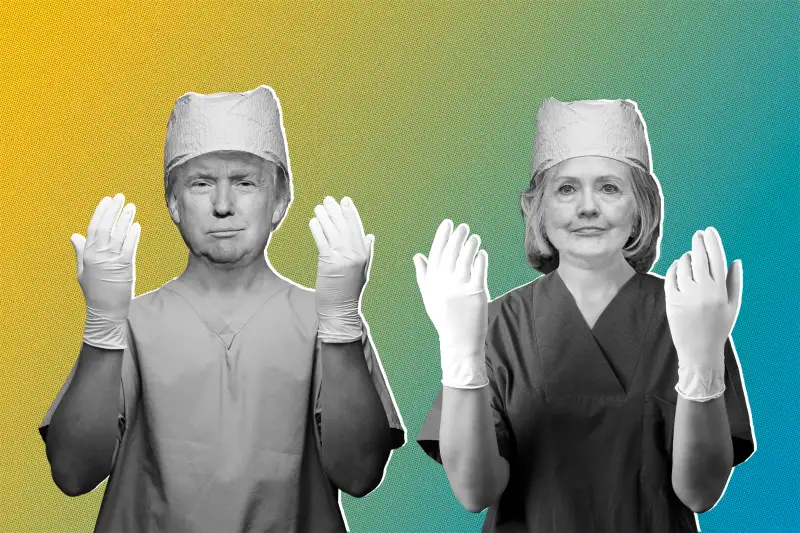Between Barbs, Trump and Clinton Hint at How They'd Heal Health Care

After a first debate dominated largely by national security issues, Donald Trump and Hillary Clinton faced off over health care on Sunday night in their second, town-hall-style meeting at Washington University in St. Louis.
In response to an audience member who called health insurance unaffordable under the Affordable Care Act, Trump repeated his previous calls to repeal the law, also known as Obamacare. The Republican presidential nominee said he would replace the law with something "absolutely much less expensive."
Clinton countered that she would focus on the law's affordability problem but would keep what has worked about President Obama's signature legislation. In addition to insuring 20 million Americans, the law implemented important consumer protections, Clinton said.
Before the Affordable Care Act was fully implemented in 2014, insurers could deny Americans coverage on the individual market or charge them more based on pre-existing conditions. Carriers could charge women more than men, a practice that's no longer allowed. What's more, the law banned dollar limits on coverage and allowed young adults to remain on their parents' plans until age 26.
While these new provisions have proven popular, for some consumers the law has not lived up to its name. Premiums and deductibles have been rising, although at a preliminary estimate of 9% the average projected premium increase for benchmark silver plans for 2017 is considerably less than the 59% to 71% range that Trump mentioned on Sunday. Yet while the average increase won't be "astronomical," as Trump threatened, consumers in some markets could experience rate hikes of as much as 42%.
These increases stem in part from flagging competition on the Obamacare exchanges. UnitedHealth Group and Aetna are among the insurers that have dramatically scaled back their participation on the exchanges for 2017, citing financial losses. What's more, not enough younger, healthier people have signed up for coverage to balance out the costs of the older, sicker consumers who have enrolled in higher numbers.
Government premium subsidies will mitigate the impact of premium increases for the more than 80% of Obamacare enrollees who receive them, experts say. However, deductibles have also been rising, and there was a grain of truth in Trump's remarks that you can't actually use your Obamacare health plan "unless you get hit by a truck."
That's because the average annual deductible for popular silver plans is $3,117 for an individual, according to HealthPocket. Consumers must pay that hefty amount out-of-pocket before their insurance kicks in to cover their emergency treatment or illnesses. Certain types of preventative care, such as mammograms and colonoscopies, are covered at 100% before the deductible is met. (If you were to get hit by a truck, say, or get cancer, your bills would be high enough that you would clear that deductible.)
In order to bring down costs for consumers, Trump said he would allow insurers to sell across state lines. This would foster competition and lower prices, the thinking goes. An analysis by the non-partisan Urban Institute challenged that plan, saying that it could indeed reduce costs for the healthy but could increase premiums and restrict access to coverage for those in poorer health.
A recent study by the Commonwealth Fund projected that 20 million Americans would lose their insurance under a President Trump.
Clinton did not offer details about how she would bring Obamacare costs down.